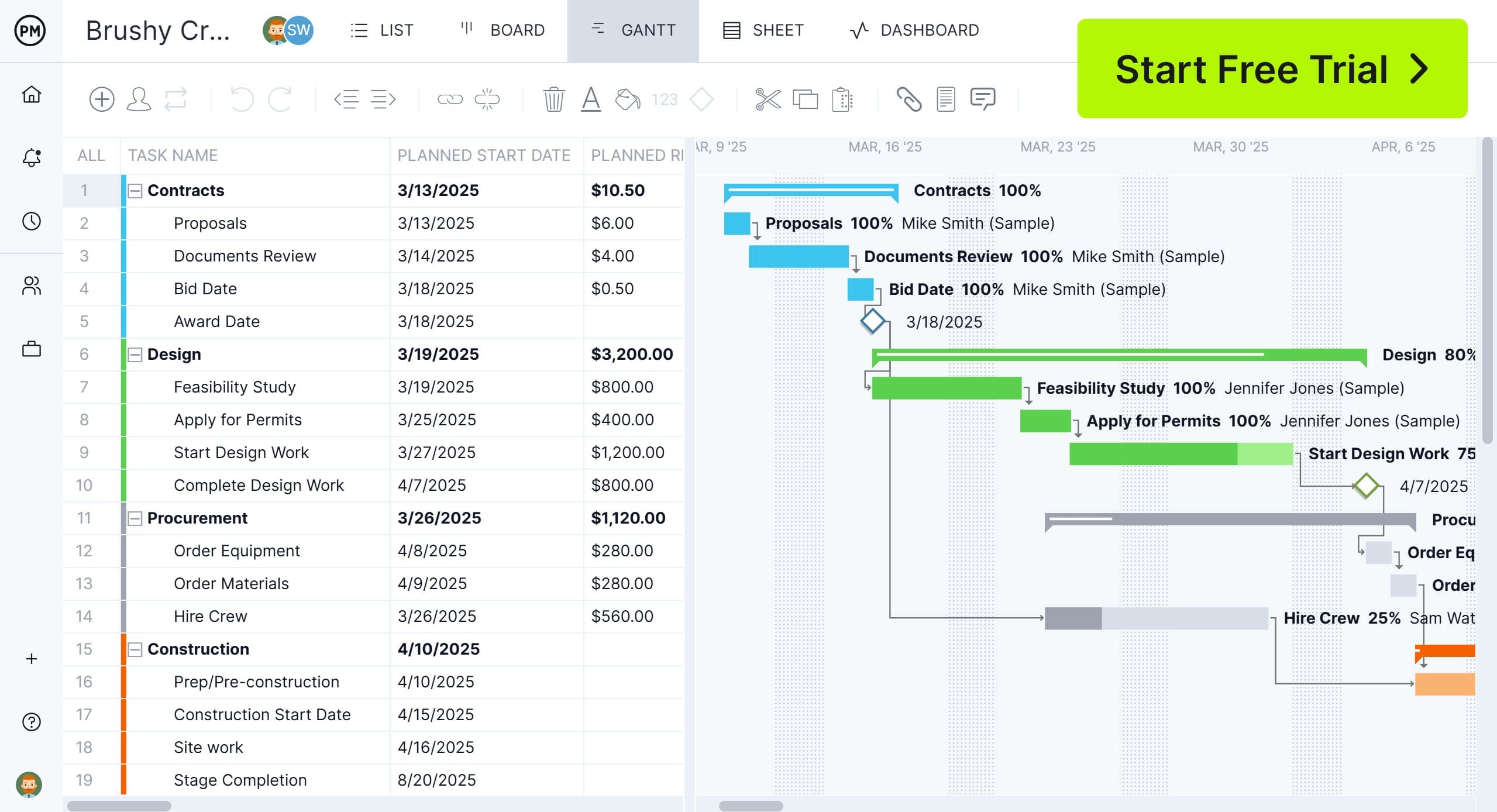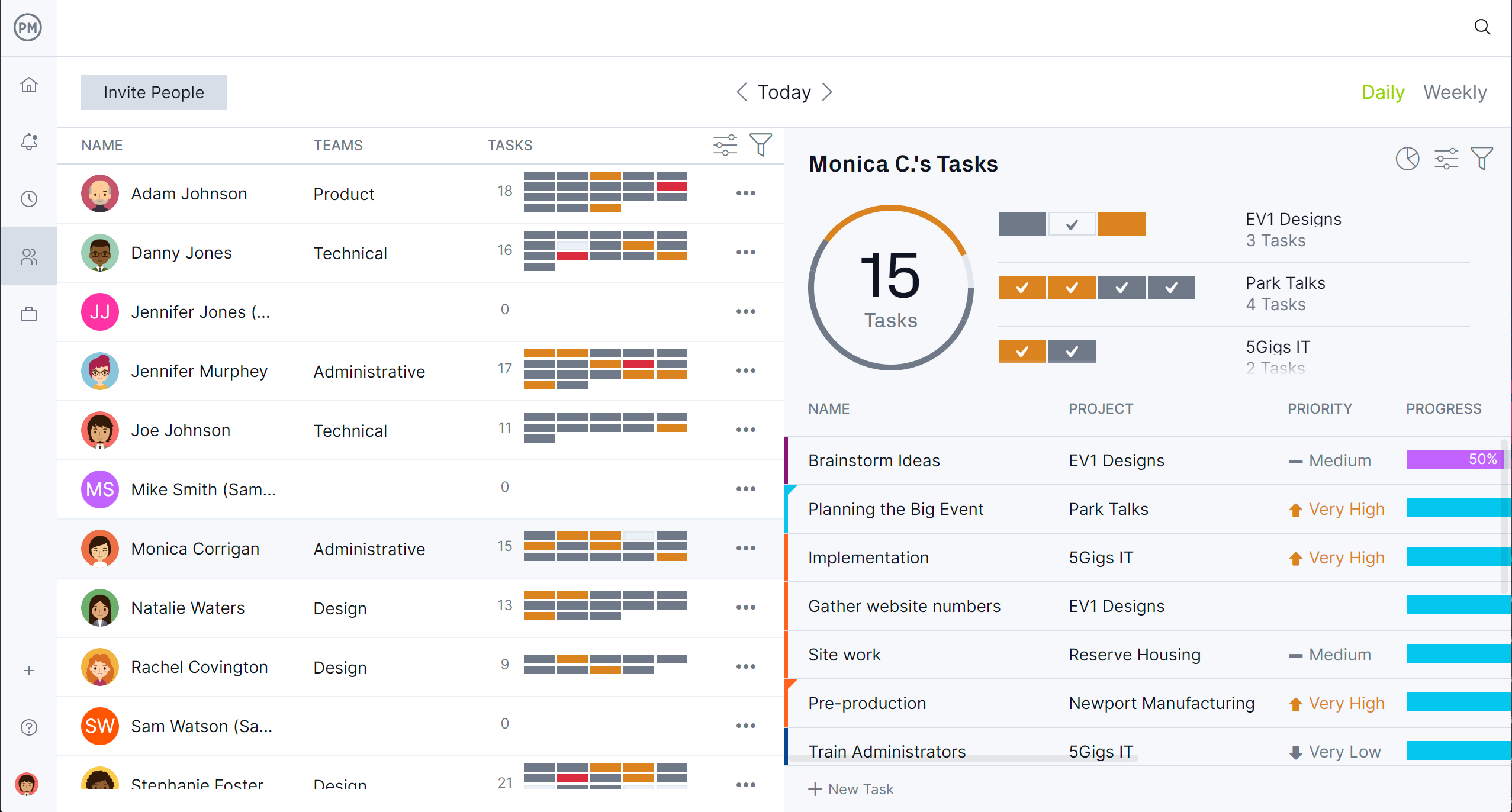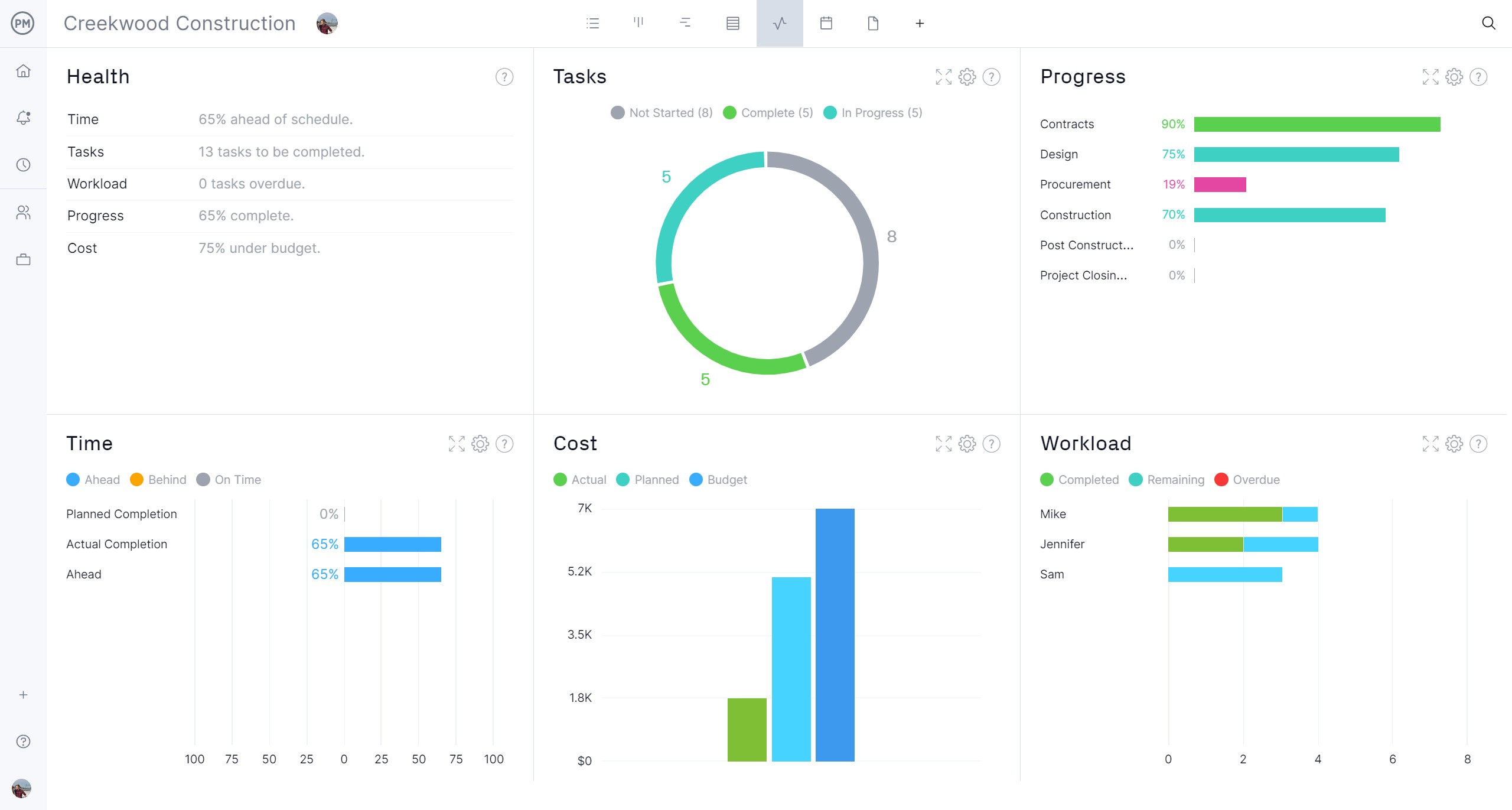Most have heard of the phrase “historic data” when planning a project. It’s a way to look back at similar projects for clues as to the needs of the current one. For those who prefer a more erudite term, there’s analogous estimating.
What is analogous estimating in project management? We’ll define that term, how and when it should be used and the various types that can be employed when forecasting projects.
What Is Analogous Estimating?
Analogous estimating is a project management technique used to estimate the cost, duration or resources required for a project or task by comparing it to similar, previously completed projects. It’s a form of top-down estimation that relies on historical data and expert judgment rather than detailed analysis.
When using analogous estimating, project managers look at past projects similar in scope, complexity and scale, and use those as a reference point. For example, if a previous software development project took three months and cost $50,000, a new project with comparable features and requirements might be estimated to take a similar amount of time and budget.
Analogous estimating plays a valuable role in informing the creation of a Gantt chart, especially in the early stages of planning. Since Gantt charts are visual representations of a project schedule—including tasks, durations, dependencies and milestones—accurate time estimates are crucial to building a realistic and actionable timeline.
ProjectManager is award-winning project and portfolio management software with robust Gantt charts that schedule tasks, resources and costs. Our tool can establish milestones and link all four types of task dependencies to avoid cost overruns. It can filter for the critical path and set a baseline to track progress in real time to keep to the project plan. Get started with ProjectManager today for free.

When to Use Analogous Estimating
Analogous estimating is best used when a project is in its early stages and detailed information is scarce. It’s particularly useful for project managers who need to generate quick, high-level estimates based on the outcomes of similar past projects.
This technique relies heavily on historical data and expert judgment, making it ideal when time is limited, the scope is not yet fully defined or the project is similar to ones previously completed by the team or organization.
Analogous estimating helps kickstart planning discussions, set stakeholder expectations and develop initial budgets or schedules without getting bogged down in fine-grained analysis. While it may not deliver pinpoint accuracy, it’s an efficient way to make informed decisions and move forward when comprehensive data isn’t yet available.
Types of Analogous Estimating
Analogous estimating can take several forms, depending on the level of detail and accuracy required. Each type uses past project data to inform new estimates, but varies in how the estimate is calculated and applied. Here are the primary types of analogous estimating used in project management.
- Single-Point Analogous Estimating: This method uses a single historical data point to estimate the cost or duration of a similar current task or project. It’s fast and straightforward, but less accurate due to its reliance on just one example.
- Range-Based Analogous Estimating: Instead of a single figure, this approach provides a range (e.g., $10,000–$15,000) based on similar past projects. It accounts for variability and uncertainty, offering a more flexible outlook.
- Adjusted Analogous Estimating: This type refines the estimate by adjusting the historical data to reflect differences in project scale, complexity or scope. It allows for more tailored and accurate estimates when simple comparisons don’t fully align.
How to Use Analogous Estimating to Make a Project Estimate
Analogous estimating is a practical and efficient technique used in the early stages of project planning when limited information is available. This method works best when the new project is similar in nature and scope to one or more past projects. By following a structured approach, project managers can generate reasonably accurate estimates that serve as a foundation for further planning.
1. Gather Historical Data From Similar Projects
Start by collecting data from past projects that resemble the current one. Look for initiatives with comparable objectives, deliverables, team sizes or resource demands. Ideally, this data should include cost breakdowns, timelines and performance outcomes.
2. Review Their Scope, Budget and Timelines
Analyze the selected projects in detail. Understand the full scope of work, what was delivered, how long it took and the overall budget. This context will help determine which elements of the past projects apply to the current estimate.
3. Identify Key Differences Between the Past and Present Project
No two projects are identical. Examine where your current project diverges from the historical ones. Consider factors such as team experience, technology used, market conditions or client expectations. These differences will impact the accuracy of a direct comparison.
4. Adjust Historical Costs for Inflation
To ensure your estimates are current, adjust the financial figures from historical projects for inflation or market rate changes. This ensures the cost estimates reflect today’s economic conditions and aren’t undervalued.
5. Ask for Subject Matter Expert Input
Consult with experts who were involved in the original projects or who understand the nuances of the current one. Their insights can validate assumptions, flag overlooked risks and improve the credibility of your estimate.
6. Create a Project Estimate
With all adjustments and input considered, compile the data into a structured estimate for your current project. Document the assumptions made, the sources of historical data used and any factors that could influence the estimate’s accuracy. This becomes a valuable reference point for project planning and stakeholder communication.
Related: 7 Free Resource Management Templates
Benefits of Analogous Estimating
Analogous estimating offers several key advantages, especially in the early stages of project planning or when limited details are available. One of the most significant benefits is speed. Since this method relies on existing data from previous projects, it allows project managers to generate quick estimates without needing extensive breakdowns or bottom-up calculations. This is particularly helpful when stakeholders need an initial cost or time projection to make decisions or secure early approvals.
Another major benefit is simplicity. Analogous estimating doesn’t demand complex tools or deep technical analysis, making it accessible even for non-technical team members. It also helps ground estimates in real-world outcomes, increasing the likelihood of practical, experience-based planning.
Additionally, by using tried-and-tested project data, this technique can improve stakeholder confidence and support more realistic goal-setting. When combined with expert judgment and thoughtful adjustments, analogous estimating becomes a valuable tool for informed decision-making and early project alignment.
Disadvantages of Analogous Estimating
While analogous estimating is a quick and accessible approach, it comes with several limitations that project managers should be aware of. One primary disadvantage is its reliance on the accuracy and relevance of historical data.
If the past project used as a reference differs significantly in scope, complexity or environment, the resulting estimate may be misleading. This can lead to unrealistic timelines, budget overruns or resource shortages once the project is underway.
Another drawback is the method’s general lack of precision. Because it doesn’t involve a detailed analysis of each task or component, analogous estimating may overlook critical cost drivers or time constraints.
It relies heavily on expert judgment, which can introduce bias or variability if not carefully moderated. As a result, this estimating method is often best suited for early-stage planning rather than final budgeting, where a more detailed and data-driven approach may be required for accuracy.
Analogous Estimating vs. Parametric Estimating
Analogous estimating and parametric estimating are both top-down approaches used to forecast project costs and timelines, but they differ in methodology and precision. As noted above, analogous estimating in project management relies on historical data for quick, less detailed results.
Parametric estimating, on the other hand, uses statistical relationships between historical data and project variables. For example, if building one mile of road costs $2 million, then 10 miles would be estimated at $20 million.
This approach is more data-driven and precise, as it applies measurable units and known rates. However, it requires accurate, relevant data and a clear understanding of cost-driving variables to be effective.
Analogous Estimating vs. Three-Point Estimating
Analogous estimating and three-point estimating are both techniques used in project management to forecast duration, cost or resource needs, but they differ significantly in approach and accuracy.
Three-point estimating involves calculating three different estimates for each task or deliverable: the optimistic (best-case), pessimistic (worst-case) and most likely scenario. These three estimates are then averaged—often using the PERT (program evaluation and review technique) formula—to arrive at a more balanced and realistic projection.
This method helps account for risk and uncertainty, making it more comprehensive and accurate, though also more time-consuming to perform.
Free Related Project Management Templates
Analogous estimating is one of many tools to forecast project duration, cost and more. Below are a few of the over 100 free project management templates for Excel and Word that cover all aspects of managing projects across multiple industries. These free templates are useful when planning projects.
Project Estimate Template
Download this free project estimate template for Excel to calculate and present the anticipated costs, timeframes and resources required to complete a project. It serves as a standardized framework that helps project managers gather, organize and communicate all key estimating information in one place.
Project Budget Template
Use this free project budget template for Excel to track and manage the financial aspects of a project. It provides a structured way to estimate, allocate and control project costs across various categories such as labor, materials, equipment, overhead and more.
Cost Benefit Analysis Template
A cost-benefit analysis is used to evaluate the financial pros and cons of a project, decision or investment. This free cost benefit analysis template for Excel helps decision-makers compare the total expected costs of a project against its anticipated benefits, expressed in monetary terms.
How ProjectManager Helps Estimate Project Costs
Whether using analogous estimating techniques or templates, once the calculations are complete, the work of delivering the project is paramount. It will not be done on templates, which are simply not efficient for something as complex as project management. Professionals use project management software, and the smart ones select
ProjectManager is award-winning project and portfolio management software with multiple project views. This allows project managers to plan costs on Gantt charts and teams to execute their tasks on kanban boards or task lists, which are updated in real time to help track costs and other metrics. There’s also a calendar view that shows the project over a month.
Stay Productive With Resource Tracking Features
To keep to the budget and schedule, resources must be efficiently allocated and tracked. That starts on the Gantt chart and then, when onboarding teams, availability, skills and pay rates are set. This helps assign the right resources to the right tasks at the right time.
Project managers can then view resource allocation in real time for one or multiple projects on the color-coded workload chart. It’s easy to see who is overallocated or underutilized and balance the team’s workload from the chart. This keeps everyone working at capacity but avoids burnout. There’s also a team page for daily or weekly summaries of their activities. It can be filtered by progress or priority, and tasks updated without leaving the page.

Keep Track of Metrics With Real-time Dashboards and Reports
Resources aren’t the only part of a project that must be monitored and controlled during the execution phase. For a high-level overview of key project metrics, toggle to the real-time project or portfolio dashboards. They don’t require any setup and are automatically collecting live data, which is displayed on easy-to-read graphs and charts that show time, cost, workload and more.
Customizable reports go deeper into status, variance, timesheets, workload and more, focusing on specific data points or general information to share with stakeholders. Secure timesheets streamline the payroll process, but also track labor costs to help stay on budget.

Related Project Cost Estimating Content
Analogous estimating is only one technique to forecast project cost, duration and more. For those curious about how others work, we’ve listed links below to recently published articles on everything from the cost breakdown structure to cost control and more.
- Free Estimate Templates for Excel
- Calculating Estimate at Completion (EAC)
- What Is a Cost Breakdown Structure (CBS)
- Project Cost Management Basics
- Cost Control in Project and Business Management
- Project Cost Estimation: How to Estimate Project Cost
- Cost-Benefit Analysis: A Quick Guide with Examples
ProjectManager is online project and portfolio management software that connects teams whether they’re in the office or out in the field. They can share files, comment at the task level and stay updated with email and in-app notifications. Join teams at Avis, Nestle and Siemens who use our software to deliver successful projects. Get started with ProjectManager today for free.



